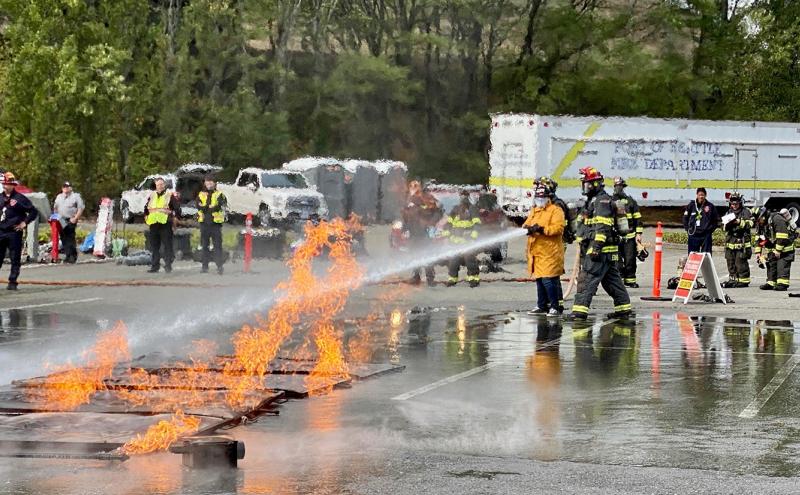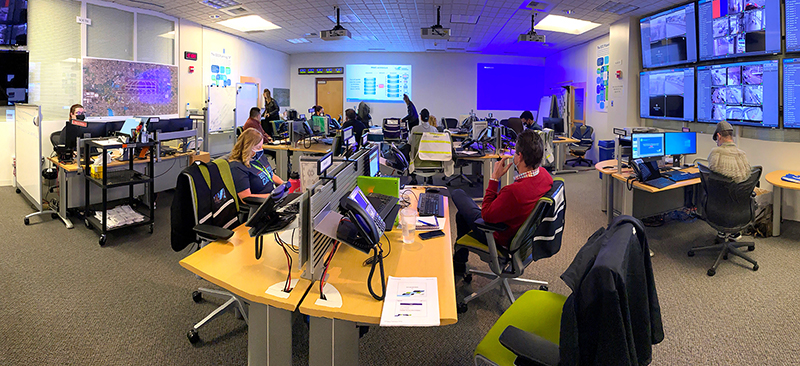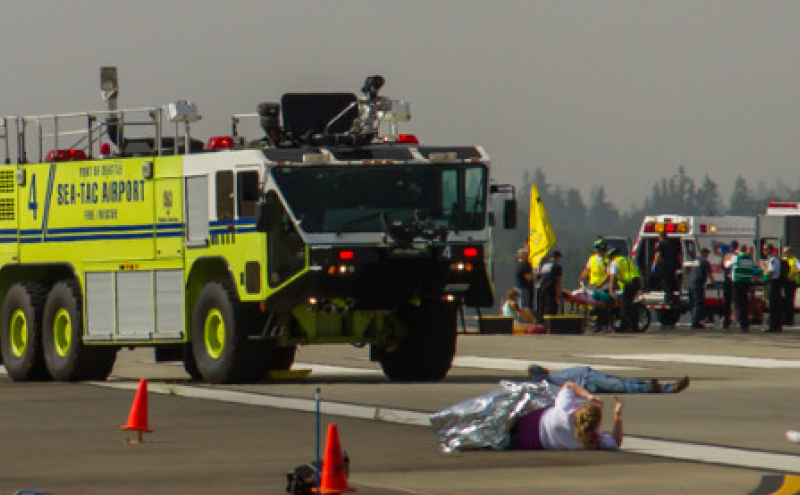
By Kati Davich, Emergency Preparedness Planning and Policy Manager, Port of Seattle
What’s life like when you spend all your time preparing for disaster? Yes, this is an actual and interesting job at the Port of Seattle. Kati Davich is one of four Emergency Preparedness Department team members. She first joined the Port in 2013 as a Maritime Division marketing and communications professional after spending her first several years working in destination marketing and event production. After taking the Federal Emergency Management Agency’s (FEMA) Community Emergency Response Team (CERT) training, Kati learned she had a passion for emergency preparedness and her planning and logistics skills were transferrable to the field.
Kati then participated in the Port’s Internal Internship program to learn more about the Emergency Preparedness Department, completed FEMA’s National Incident Management System (NIMS) core curriculum, and was hired when a position became available in 2018.
The Emergency Preparedness department includes four people (Randy Hansen, Senior Manager; Brian Kyser, Training and Exercise Program Manager; and Ashley Brooks, Program Manager) and teams up with other government agencies, tenants, and every Port department. Their primary goal is to ensure all stakeholders are ready to respond to a wide range of public safety and operational emergencies.
Kati loves using her skills to keep the Port community safe in the event of an emergency, the views from the Port’s waterfront facilities, and the excitement of working at Seattle-Tacoma International Airport (SEA) — her primary office location. Here is a typical day in the life of an Emergency Preparedness Manager.

6:00 a.m.
I wake up at the same time my husband, a Port of Seattle Aviation Maintenance Utility Worker, is clocking in. There are quite a few employees with relatives also employed at the Port. My husband just started at the Port this year, so I’ve been enjoying using my 10 years of experience to help get him acquainted with the organization.
8:00 a.m.
I arrive at SEA and take the stairs up to my office in the Airport Office Building, the building that sprouts up from the south end of the main terminal. Because my position requires me to be on call, I bring all my equipment home every night. The first order of business is reconnecting my laptop to the Port’s network, putting my 800MHz radio back in the charger, charging my mobile phone, and — of course — getting the ultra-critical coffee brewing before catching up on email.
10:00 a.m.
I lead the Port’s mass communication system steering committee comprised of the Information and Communications Technology (ICT) department, Airport Communications Center (ACC), 911 Communications Center, and a few others. Mass communications systems are computer programs that organizations use to quickly communicate via text, app, phone call, and email to alert people of public safety hazards and to facilitate public safety or operational response. The committee meets each month to identify and address any gaps in alerting employees and tenants, develop best practices, and ensure the system is being used optimally.
12:00 p.m.
I eat a quick lunch and take a walk around the terminal to both be aware of changes due to the many ongoing capital projects and to get some steps in.
2:00 p.m.
One of my first tasks when starting in this position was to update the Port’s Continuity of Operations (COOP) Plan and the training and exercise program that supports it. To that end, I administer around 30 COOP refresher trainings for department leadership teams each year, so they know how to guide their departments through large disruptive events and maintain the Port’s mission essential functions.
3:00 p.m.
Whether it’s writing a new emergency plan or managing another project, I usually end my day at my desk working on projects.
4:30 p.m.
Pack up all my equipment, clock out, head home, and look forward to my dog’s enthusiastic greeting. One of the airport’s peak times is the evening when lots of flights arrive and passengers are picked up, so our team always keeps an eye on the notifications on our phones outside of standard work hours and respond if needed.
Learn more
If you’re interested in public service careers or how to be prepared for an emergency, check these resources below:
- Port of Seattle public safety careers
- Disaster Ready Washington preparedness guidance care of the Washington State Emergency Management Division (also check your city and/or county’s website for local guidance)
- Individuals and Communities preparedness guidance care of FEMA
Top photo caption: The Port of Seattle Fire Department teaches Kati how to use a fire hose after the successful conclusion of the 2020 Triennial Aircraft Collision Exercise.









